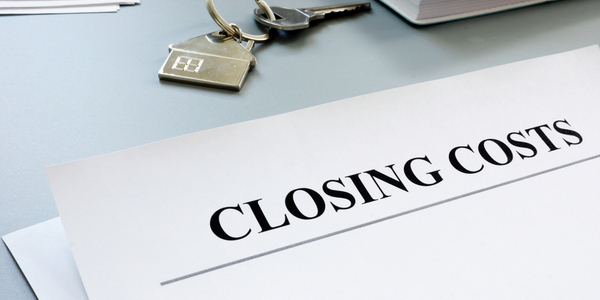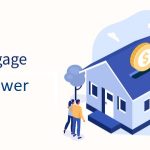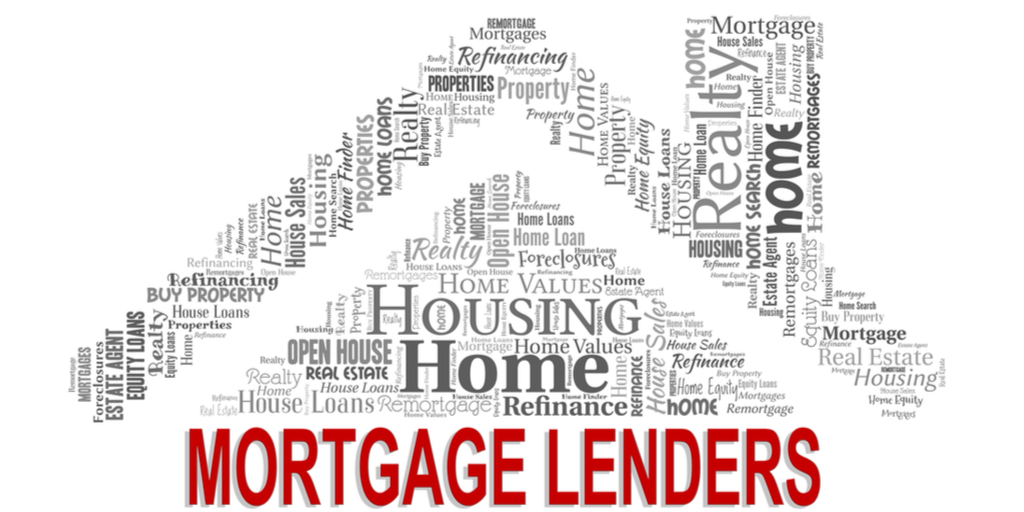The last fifteen months have been unprecedented for the mortgage industry. With the Covid-19 pandemic rattling the lending ecosystem, lenders have seen the worst in the form of business loss, rock-bottom productivity, depleting revenue streams, and distorted workflows. Among other concerns, mortgage closing has been a source of deep worry for lenders.
The practice of social distancing has indubitably helped the world in its fight against the lethal virus but it has also thrown a curveball at the mortgage industry. With mortgage closing largely comprising physical meetings and field visits, lenders are facing a unique challenge to conduct operations. Consequently, they are forced to explore digital closing possibilities to ensure the safety of homebuyers, loan officers, and attorneys while conducting operations amidst the health crisis. Digital closing refers to the closing of a mortgage loan electronically, where the relevant documents are accessed and signed electronically.
| A survey by Fannie Mae revealed that two-third of borrowers want a fully digital mortgage process. |
What Makes Mortgage Closing a Concern for Lenders?

Unrestrained Surge of Closing Costs
High costs associated with traditional paper closings have been a perennial worry for lenders. Factors that add to the rising cost include stationery, shipping, physical storage, employee bandwidth to spend on manual tasks, and many more. High costs, combined with the gradually shrinking margins, are forcing lenders to adopt technology to ensure sustenance and profitability.
| The average cost of closing a mortgage loan climbed from $5,958 in 2013 to $8,405 in 2018. |
The various daily life constraints induced by the Covid-19 crisis have significantly cut down on the employees’ loan capacity, forcing the lender to deploy more resources to execute closing formalities, leading to high costs. The cost invested in training employees on the closing process also adds up significantly, making it imperative for lenders to seek external help.
| Electronic mortgages are expected to cut down costs by an average of $1,100 per loan, adding up to $1 billion/year savings for the industry. |
Overwhelming Stack of Paperwork
Extensive paperwork has always been a roadblock for lenders at every stage of the lending cycle, especially during closing. The volume of paperwork is anywhere around 30 to 40 documents, with occasional exceptions. The higher the number of documents involved, the greater the chances of errors, which can lead to business losses for the lender and a bitter experience for the borrower.
Another pain point attributable to paper closing is the need for the lender’s team to print and scan all documents to convert paper packages into electronic files. With a reduced workforce during the pandemic, the problem of documentation has only been exacerbated. Most lenders have seen their workforce bogged down with managing and validating papers, resulting in uncertainty about the loan quality and a delayed process.
Excessively Time-consuming
Cutting down on the mortgage closing time has always been a priority of lenders. Among other factors, what contributes to the slowdown of the closing process is the time borrowers take to review the documents as they see those for the first time. Processes such as the downloading, printing, and scanning of mortgage files also take up a significant amount of the closing time.
During the pandemic when insurers are already working with reduced strength, stakeholders are feeling a desperate need for automating processes such as data entry and communications. When the time spent on such tasks is reduced, lenders and settlement companies can focus on eliminating the common process errors, without having to reschedule the closing. Also, it enables the borrower to get the disclosure documents earlier, allowing them enough time to review the paperwork.
Digital Closing and its Variations
Digital closing refers to the inclusion of one or several digital components in the mortgage closing process. Although the nomenclature and features may vary from lender to lender, eClosings, wet closings, and hybrid closings are considered among its most popular types. The primary difference between these lies in the amount of the process digitized.
eClosing
In eClosing, the lender digitizes the closing process, signs the loan package electronically, and notarizes it in an eClosing. The entire process is carried out digitally and the lender can fix either in-person or remotely conduct the closing appointment. When completed, the necessary documents are transferred electronically.
Wet Closing
In a wet closing, the lender prints all loan documents on paper and signs and notarizes those in ink. The closing workflows are digitized, enabling the borrower to preview the documents prior to the in-person closing appointment. The documents may be scanned and recorded electronically or can be sent via courier or mail.
Hybrid Closing
A hybrid closing borrows its features from both wet closing and eClosing. In a hybrid closing, part of the package is signed and notarized in ink, and the rest is completed electronically. Whether to go for wet-sign or electronic sign is decided by the lender or the investor. If the borrower chooses to electronically sign certain documents before the closing appointment, they would have to wet-sign the rest of the documents at the closing table. However, since there is the presence of wet-sign documents in hybrid closings, they mandate in-person closing appointments.
How Digitization Emerges as the Silver Bullet to All Mortgage Closing Issues
The silver lining of the otherwise disastrous pandemic has been the boost to the erstwhile glacially proceeding digitization in the mortgage industry. Mortgage closing has been an area of special interest for lenders to test the effects of digitization owing to the massive scope it offers for the application of technology. Below is a compilation of a few benefits of digital closing that make it a critical component to ensure business continuity even in the face of a crisis tougher than the current one.
| 70 percent of borrowers want a more digital process at the mortgage closing table. |
A Push to Productivity
Documents that are digitized, eSigned, and eNotraized significantly reduce the mortgage closing time, enabling lenders to immediately access the completed documents. An automated mortgage process injects efficiency into the otherwise routine tasks such as documentation, verification, and appraisal, implying less time and hassles for the closing team.
- Digitization facilitates quick sharing of electronic files, allowing lenders to sell loans faster by reducing the dwell time.
- Digitization implies fewer documents, allowing the lender’s side to save the time which it would have spent in printing, scanning, and storing the physical files.
- Lenders can cut short the closing appointment cycle by allowing borrowers to fully comprehend the mortgage documents before the closing.
Greater Accuracy
The nature of manual mortgage closing processes makes them highly prone to human-errors. During situations such as the ongoing pandemic when face-to-face conversations are rare, such errors can cause serious damages in the form of deal cancellations and a bad reputation. Digital closing platforms are built with features that ensure the correctness and completeness of information, eliminating the chances of delays.
- Digital features such as eSignature and eNotization enable borrowers to sign, notarize, and fill all the required fields in the document, facilitating quick closures.
- As borrowers get enough time to review the loan package before their closing appointment, they are likely to identify any errors way before the closing.
- Lenders and settlement companies also get the time they need to correct their errors without rescheduling the closing, a highly desired advantage, especially in the current situation.
A Check on the Costs
Even before the Covid-19 onslaught, lenders were reeling under shrinking profit margins and high operating costs; the pandemic further worsened the problem. With a rising number of claims filed and the drying up of sales, lenders are looking for areas that stand out as good candidates for automation to reduce costs. With the closing process closely matching with the prerequisites of applying automation, it is an inviting option for lenders to try digitization.
- With most tasks automated, lenders can reduce their reliance on closing employees, saving handsomely on staffing costs and boosting employee efficiency.
- In the post-Covid situation when business regains pace, lenders can control the variable costs of reinforcing the closing team to accommodate busy seasons with the application of digitization.
- With most processes automated, the need for the management to invest in recruiting new employees and training them also reduces, enabling more savings.

A Chance to Delight the Borrower
Just like any other industry, the consumer in the mortgage landscape always wants more in terms of customer engagement, product offering, borrowing experience, and the value the products deliver. Even though the pandemic has crushed or at least postponed the plans of lenders to revamp their customer experience, the expectations of the borrower cannot be ignored. Also, with the digitization of daily-life activities such as shopping, entertainment, and office work, consumers demand the same from lenders too.
| As per Ellie Mae’s 2019 Borrower Insights Survey, a majority of mortgage borrowers use digital tools if they were available. |
- As the borrower gets better visibility into the digitized closure process, they can review documents, ask questions, and correct errors before the closing; this helps lenders to establish a professional trust with them.
- With digitization, borrower interviews can be conducted swiftly. Digital interview solutions take the process mobile, enabling borrows to answer relevant questions from any device, at their convenience.
- With reduced paperwork, digital closing saves the time of the customer. Owing to the streamlined closing with automation, customers can quickly complete the formalities and get the fund.
| In a survey of mortgage borrowers, 83% of the respondents said they used an online portal to electronically sign and notarize documents when offered the option. |
Addresses Security Concerns
Instances of mortgage information mishandling and data loss have drastically come down over the years. However, papers can still be misplaced or get lost in the mail, creating inconveniences for all stakeholders. Also, the pandemic has triggered a sudden rise in the number of instances of fraudulent activities, making it imperative for lenders to look for foolproof solutions to protect the non-public personal information of the borrower, such as their financial details and social security number.
- By leveraging digital closings, lenders can deliver a multitude of security benefits to borrowers, such as digital audit trails, restrictions on document access, tamper-evident seals, etc.
- Lenders can secure the integrity of digital documents with tamper-evident seals. Restricted access to documents allows only authorized stakeholders to view the closing documents.
- Digital closing platforms can be configured to keep stakeholders informed on all status updates, enabling better coordination between lenders and borrowers.
| When compared to the figure 3-5 years ago, today 36% more borrowers tend to evaluate three or more lenders. |
The preceding sections establish the need for digitizing the mortgage closing process and the operational advantages it offers. However, the lender has to exercise discretion while deciding on their digitization approach. While considering digital closings, technologies that do not imply additional work for the human workforce must be the priority. Mortgage companies must prefer technology that exactly matches their business needs and efforts to sync with the new business norms of the post-Covid world. To that end, joining forces with a competent mortgage services provider that possesses cutting-edge solutions to expedite the closing process and cut down on the complexities is the key.
| About 60% of the home loan borrowers in the last two years have wanted to review the initial disclosures digitally, and about 50% of the borrowers prefer reviewing and signing their paperwork that way. |
Who We Are and Why We Are an Industry Authority
As a trusted name in the US mortgage services industry, Expert Mortgage Assistance (EMA) helps lenders across the country with digital closing technologies that route loans to their most digital path for business benefits and customer delight. We enable clients to choose the best closing solution by considering their unique challenges and opportunities, thus ensuring high-throughput. For the mortgage industry, digital closings are the future; and we present lenders with the opportunity to cash in on this future with our custom solutions that deliver reduced costs, expedited processes, and improved experience.







No Comments